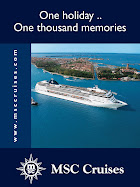
A Historical Trip into the Future
By Farah Kashwa
We have all heard about unconventional teaching methods done by several teachers. Students almost usually enjoy scientific labs or hands-on projects more than simply taking notes in the classroom. However, the journey of the Jewel of Muscat introduces a whole new syllabus to the educational system. Robert B. Jackson, a history teacher at The American International School of Muscat (TAISM), has been invited, by the Omani government, aboard a ship that will embark on a once-in-a-lifetime journey. Therefore Mr. Jackson has invited all his students and students from all over the world to follow the unique journey.
This project is both a historical and a cultural project that was started by the Omani and Singaporean Ministries of Foreign Affairs under the supervision of maritime archaeologist Dr. Tom Vosmer. The project involved the reconstruction of a ninth-century ship Arab merchant ship that sank off the coast of Indonesia. The original cargo on the ship in the ninth century consisted of some 60,000 pieces of Tang dynasty ceramics that was headed for Arab and Persian markets. After the ship and its cargo were discovered in 1998 by archaeologists, it provided them with a lot of information about the Indian Ocean trade and also the manufacture of Arab ships.
The construction of the Jewel of Muscat was complete during the early days of February. The ship was scheduled to set sail on the 16th of February, 2010, and is expected to arrive in Singapore in early July. On its incredible journey, it will follow one of the oldest and most significant mercantile trade routes that history knows. The route that will be followed is the same route that was documented by Arab geographers who sailed on the original ship. Even though their journey is from Oman to Singapore, the crew and ship will make several stops along the way: Cochin, India; Galle, Sri Lanka; and Panang, Malaysia, and then will finally dock in Singapore.
Once the crewmen and ship reach Singapore, the ship will be put on display permanently at the same museum which displays the artifacts discovered from the original vessel.
Mr. Jackson’s job throughout the journey is to document the trip by keeping a photographic and video record of it. As Mr. Jackson said, this will be a tremendous opportunity for both teachers and students to learn about geography, history, navigation, Indian Ocean trade, and ancient ship design.







ليست هناك تعليقات:
إرسال تعليق